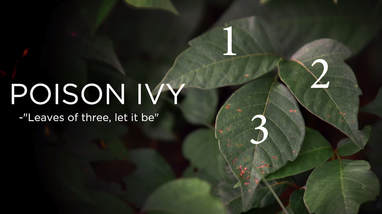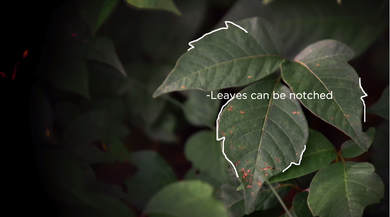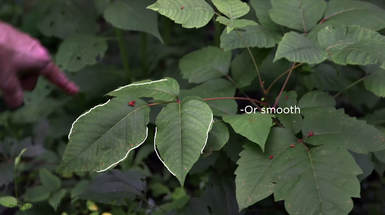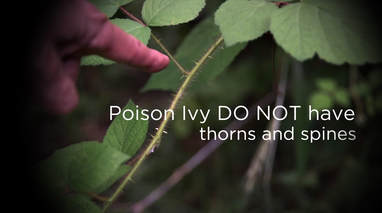Text by Dr. John G. Jelesko, Virginia Tech faculty
Images by Andrew Huang, Virginia Tech student
Summer is in full swing, and so is the risk of poison ivy rash. For the majority of adults (about 80%) direct contact with any part of poison ivy plant results in allergenic contact dermatitis (commonly called poison ivy rash). The natural product produced by poison ivy/oak/and sumac that is responsible for causing allergenic dermatitis is called urushiol. The symptoms can range from minor reddening and itching, to extensive swelling with oozing puss filled blisters (yuck!). Perhaps the worst part is the incessant itching! Moreover, in 2006 and 2007 two scientific studies demonstrated that increasing atmospheric CO2 levels result in poison ivy grew faster, made more biomass, and produced more allergenic forms of urushiol. Expect to see more (and more noxious) poison ivy in your future!
There is currently no prophylactic treatment to prevent poison ivy rash before exposure to the plant. That means identification and avoidance is your best “medicine” for preventing poison ivy rash. To this end, the my laboratory at Virginia Tech is developing a public education and engagement social media campaign called The ITCHY Project. This stands for Investigating Toxicodendron Change and Habitat for Years, hence the acronym ITCHY. We recently developed a video called “The Familiar Stranger” focusing on poison ivy identification to help the public accurately identify poison ivy. You can see “The Familiar Stranger” on The ITCHY Project Facebook page (www.facebook.com/theitchyproject). Here are some takeaways about identifying this “familiar stranger”.

Diagnostic 1: “Leaves of three let it be”: This proverb is a good first step towards positive poison ivy identification. Botanically speaking poison ivy makes a compound leaf with three leaflets. There is a terminal leaflet and two opposing lateral leaflets, so “leaves of three (leaflets)” is close enough botanically speaking. One diagnostic is the different lengths of the structure that attaches the leaflets to the central petiole. The terminal leaflet has a much longer attachment than the two lateral leaflets attachments that are much shorter. Unfortunately, there are lots of plants with compound leaves with three leaflets, so this is not enough to positively identify poison ivy.

Diagnostic 2: Leaflet margin shape(s): In most cases, poison ivy leaflets show some degree of lobing or notching of the leaflet edges (leaf margins). The terminal leaflet typically shows symmetrical lobes on both sides, whereas the lateral leaflets will show asymmetric lobing with deeper lobes on the outer leaflet margin than the inner margin (giving it a “mitten shape”).

With that said, poison ivy is notoriously polymorphic with some leaflets showing no lobing at all (smooth leaf margins). I have seen different lobing patterns on different poison ivy leaves on the same plant! On the other hand, poison ivy NEVER has saw-toothed leaf margins. Common poison ivy look-alike are wild raspberry/blackberries which have three leaflets shaped similar to poison ivy, but the leaf margins are very serrated (saw-toothed).

Diagnostic 3: No spines, thorns, nor twining. Wild raspberry/blackberry also have conspicuous spines/thorns on the stems. Another common poison ivy look-alike is hog peanut that has somewhat more diminutive smooth margined “leaves of three (leaflets)”. However, hog peanut branches climb by twining around other plant branches or stems. Poison ivy can also climb as a vine, but it NEVER does so by wrapping around a branch or stem (twining). Instead, poison ivy vines/lianas climb by putting out aerial roots on the stem that cling to the bark of its host tree, or wedge itself into cracks in the bark of trees (or rocks for that matter) to gain purchase.
I wish all the VA Master Naturalists a wonderful summer in the outdoors, enabled with new skills in poison ivy plant identification and avoidance. As for me, I will be seeking out poison ivy as much as possible as part of my research focus on this ever-fascinating “Familiar Stranger”.




